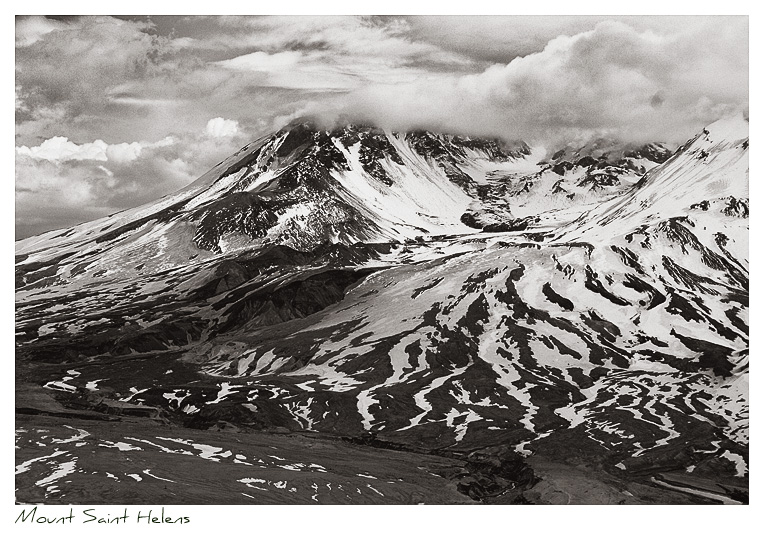

Technical Data:
Description:
Canon Rebel XTi
Canon EF-s 18-55, @ 55mm
1/200s, f/10, ISO 100
Mount Saint Helens, Washington
May 24, 2008
We've all heard of this place. We've all seen video of the devastation. It's scary to see the mudflows that wiped away bridges, homes, and people.
It's nothing compared to seeing it in person.
On the concept of feeling small and insignificant, imagine how small you'd feel standing next to an 8ft diameter tree snapped in half by sudden force, 6 miles from where the blast occurred.
But what's really significant here is change. Our entire universe is on a constant path of change: everything is heading toward some sort of equilibrium.
Mountains rise, only to slowly erode their way back to sea level. Gravity pulls it all back down, eventually.
The earth builds up massive amounts of heat and pressure, and figures a way to blast it all out, to relieve some of that pressure in search of equilibrium, yet again.
30 years ago, this place was just as beautiful as any other volcano in the Cascades. Beautiful old-growth forests, lakes, trails, wildlife.
Today, it's all returning, but very slowly.
While it may not be a particularly popular point of view, I think it needs to be said that the Earth will find a way to fix whatever is wrong.
Earth heats up and cools down on its own schedule. It has been much colder than this in the past, and much hotter as well.
Who are we to say that the way things are right now is the way they should be, forever? How arrogant are we to assume that the way we currently see things are the correct way and the only way they should be?
This isn't moral relativism. There are forces at work way stronger than humanity. How arrogant of us to assume that our impact could actually cause as much damage as what this volcano did in mere minutes.
And yet, the planet has found a way to renew itself. In that infertile debris from the eruption, plants are slowly coming back. How? Certain plants are able to grow in nitrogen-poor soils and implant nitrogen into the soil as a by-product. Gophers are able to dig around in it and churn the soil around and transplant nitrogen and other nutrients into it.
You see, humanity is but a momentary blip in the amazing history of this planet. And it will find a way to persevere long after we're gone.